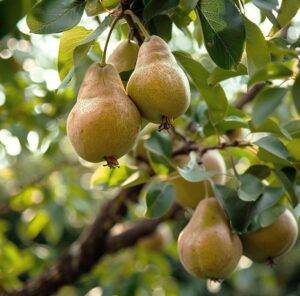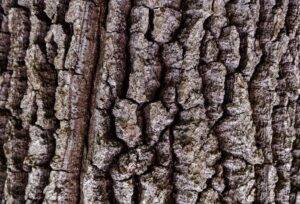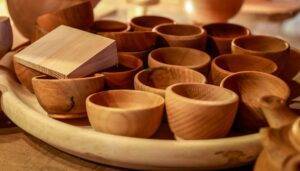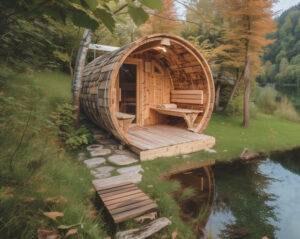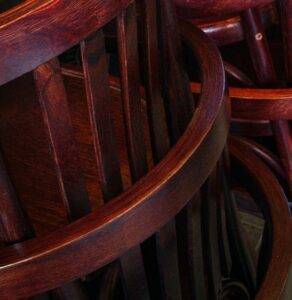Plum tree
The wood of the plum tree combines sophistication and beauty. Although it is demanding to work and drying can be problematic, the wood rewards with its fascinating range of colors from pink to reddish to purple and orange-brown.
Plum trees are both ornamental plants and suppliers of delicious fruit, which glow bluish to purple in the fall. Their wood has a decorative surface with striking colors ranging from pink-brown to dark purple, interspersed with light to dark stripes and a fine grain.
Due to the limited size of the trunks, plum tree wood is particularly suitable for the production of small objects. It is rare and therefore particularly sought-after for woodturning and carving.
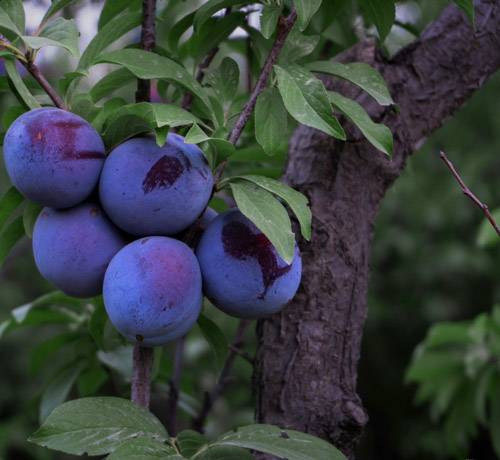
Quick overview of plum wood:
- Plum wood is a trend material in the design world
- The aesthetics of plum wood are unique and versatile
- Plum wood is durable and robust
- The processing of plum wood requires craftsmanship
- Sustainability and environmental friendliness are important aspects when sourcing plum wood
The popularity of plum wood in the design world
More and more designers are choosing to incorporate plum wood into their designs. One reason for this is the extraordinary beauty of the wood itself. The characteristic pattern and warm colour tones give each piece a natural elegance and uniqueness. In addition, the wood is extremely versatile and can complement both rustic and modern designs.
One example of the use of plum wood is its integration into furniture pieces such as tables, chairs or beds. The wood gives these pieces a natural warmth and creates a cosy atmosphere in the room. But the wood is also becoming increasingly popular in interior design. From wall cladding and staircases to decorative elements such as picture frames or lampshades — plum wood is finding its place in various design areas.
The unique aesthetics of plum wood
Plum wood has a very special look and feel that sets it apart from other types of wood. The characteristic pattern consists of dark stripes alternating with lighter-coloured wood, giving the material a lively texture. This natural beauty makes every piece of plum wood unique.
Compared to other types of wood often used in the design world, plum wood has a charm of its own. It is not as smooth and even as maple or oak, for example, but has a certain rusticity and naturalness. This rustic character can give any room a warm and cosy atmosphere.
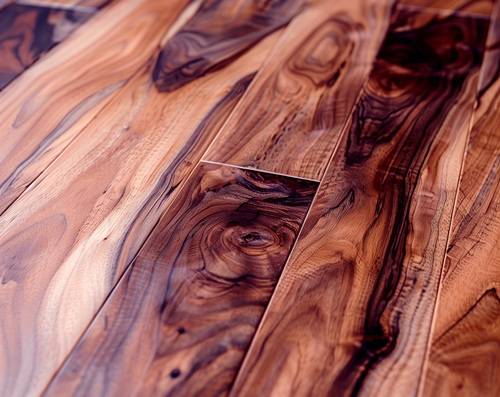
The durability and robustness of plum wood
In addition to its aesthetic appeal, plum wood is also characterised by its durability and robustness. The wood is hard, resistant to scratches and signs of wear and tear and moisture-resistant. This makes it ideal for use in furniture or other design elements that have to withstand daily use.
The use of plum wood in furniture offers many advantages. The durability of the wood ensures that the furniture will last for generations. In addition, the wood is easy to care for and can simply be cleaned with a damp cloth. These properties make plum wood a popular choice for high-quality and durable designer furniture.
Sustainability and environmental friendliness of plum wood
Another reason for the increasing popularity of plum wood in the design world is its sustainability and environmental friendliness. The wood comes from sustainably managed forests where new trees are planted to maintain the population. This ensures that the use of plum tree wood has no negative impact on the environment.
Compared to other materials commonly used in the design industry, such as plastic or metal, wood is a natural raw material with a low ecological footprint. It is biodegradable and can be recycled or composted at the end of its life cycle.
The versatile use of plum wood in design
Plum wood offers a wide range of possibilities for use in design. In addition to furniture, it can also be used for flooring to create a warm and natural look. It is also suitable for wall panelling, adding a natural touch to any room.
Plum wood is also used in accessories and decorative elements. From chopping boards to clocks and jewellery: the wood can be processed in various shapes and sizes to create unique and individual pieces.
The importance of craftsmanship when working with plum tree wood
The processing of plum tree wood requires craftsmanship and precision. The wood is not always easy to work with, as it has a certain hardness. It is therefore important that designers and craftsmen have the necessary expertise to get the best out of the material.
Handcrafted elements play an essential role in the use of plum wood in designs. By carefully working the wood, unique details can be emphasised, making each piece a work of art.
The challenges of sourcing plum tree wood
Sourcing high quality plum tree timber can be a challenge. As the wood is not as widely available as other types of wood, it can be difficult to find a reliable supplier. In addition, certain quality standards must be met to ensure that the wood has the desired properties.
It is also significant to follow responsible sourcing practices. This means that the wood should come from sustainably managed forests and no illegal logging should be supported. By using certifications such as the FSC label, the origin of the wood can be traced and it can be ensured that it comes from responsible sources.
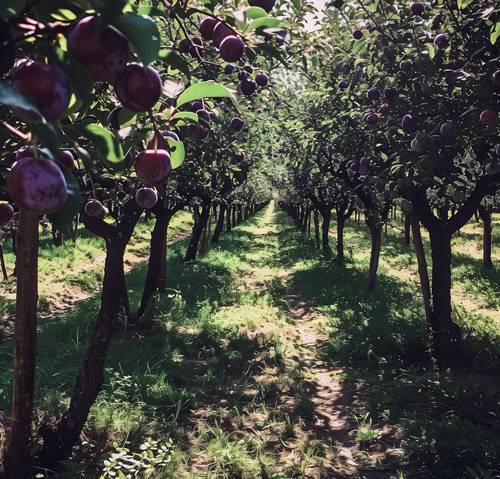
The future of plum wood in the design world
Plum wood has taken its place in the design world and is here to stay. Due to its unique aesthetics and versatile uses, it is expected to continue to grow in popularity. Designers are always looking for new materials and techniques to enhance their creations, and plum wood offers an interesting alternative to traditional materials.
In addition, there is still plenty of potential for new and innovative applications of plum wood in the design sector. As technology advances, new processing techniques can be developed to make the wood even more usable.
Conclusion
Plum tree wood has established itself as a popular material in wood art. Its unique aesthetics, durability and environmental friendliness make it an attractive choice for designers around the world. The versatility of plum tree wood makes it possible to create unique and personalised designs. However, it is important to follow responsible sourcing practices and focus on quality craftsmanship to get the best out of this special wood.
FAQs
What is damson wood?
Plum wood is the wood of the plum tree, which is native to Europe and Asia. It is a hard and dense wood with a fine grain and a warm colour.
Why are more and more designers focussing on plum wood?
Plum wood is very robust and durable due to its hardness and density. It has a beautiful grain and colour, which makes it an attractive material for furniture and other design objects. It is also sustainable, as the plum tree is widespread in many regions of Europe and Asia.
What products are made from damson wood?
Plum tree wood is used for a variety of products, including furniture, chopping boards, kitchen utensils, jewellery, and watches. It is also used for musical instruments such as guitars and violins.
How is plum wood processed?
Plum wood is processed like any other wood. It is sawn, planed, sanded and polished to achieve the desired shape and surface. However, due to its hardness and density, it can be more difficult to work with than other woods.
